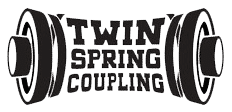Understanding the Different Types of Industrial Couplings and Their Applications
As a small business owner in the manufacturing industry, I’ve come to appreciate the importance of industrial couplings in keeping my operations running smoothly. These unsung heroes of the mechanical world play a crucial role in transmitting power and motion between rotating shafts, and the right coupling can make all the difference in the efficiency and reliability of my equipment.
In my experience, there’s a dizzying array of coupling types out there, each with its own unique features and applications. So, I thought I’d share my insights on the different types of industrial couplings and how they can benefit businesses like mine.
Rigid Couplings
Let’s start with the most straightforward option: rigid couplings. These are the simplest form of coupling, designed to connect two shafts in a fixed, unyielding manner. Rigid couplings are often used in applications where there’s minimal misalignment between the shafts, such as in small electric motors or gear reducers.
The key advantage of rigid couplings is their simplicity and cost-effectiveness. They’re easy to install, require minimal maintenance, and can handle high-torque loads. However, their inflexibility means they’re not well-suited for applications with significant shaft movement or vibration.
Flexible Couplings
For situations where you need a bit more give, flexible couplings are the way to go. These couplings are designed to accommodate a certain degree of shaft misalignment, angular displacement, and axial movement. This makes them ideal for applications with variable operating conditions, such as conveyors, fans, and pumps.
There are several types of flexible couplings, each with its own strengths and weaknesses. Elastomeric couplings, for example, use a rubber or urethane element to absorb shock and vibration, while gear couplings use interlocking teeth to transmit torque. Disc couplings, on the other hand, use a series of thin metal discs to provide a flexible connection.
The key benefit of flexible couplings is their ability to protect your equipment from the damaging effects of misalignment and vibration. This can help extend the lifespan of your machinery and reduce the risk of costly breakdowns. However, they may not be as efficient as rigid couplings when it comes to power transmission.
Fluid Couplings
For applications where you need to transmit power without a direct mechanical connection, fluid couplings are the solution. These couplings use a fluid, such as oil or water, to transfer torque between two shafts.
Fluid couplings are particularly useful in situations where you need to isolate the driven shaft from the driving shaft, such as in large industrial fans or compressors. They can also be used to provide a smooth, gradual start-up for heavy machinery, reducing the strain on the system.
The main advantage of fluid couplings is their ability to absorb shock and vibration, which can help protect your equipment from damage. They also offer a high degree of flexibility, as the fluid can accommodate a wide range of shaft misalignments and speeds. However, they can be more complex and expensive than other coupling types, and they require regular maintenance to ensure proper fluid levels and seal integrity.
Magnetic Couplings
For applications where you need to transmit power without any physical contact between the shafts, magnetic couplings are the solution. These couplings use powerful magnets to create a magnetic field that transmits torque between the driving and driven shafts.
Magnetic couplings are particularly useful in applications where you need to maintain a hermetic seal, such as in the food and pharmaceutical industries. They can also be used in hazardous environments where traditional couplings may pose a safety risk.
The key advantage of magnetic couplings is their ability to provide a completely sealed, non-contact connection between the shafts. This eliminates the need for mechanical seals and bearings, reducing maintenance requirements and improving reliability. However, they can be more expensive than other coupling types and may not be suitable for high-torque applications.
Choosing the Right Coupling for Your Application
When it comes to selecting the right industrial coupling for your application, there are a few key factors to consider:
- Shaft Alignment: Understand the degree of shaft misalignment, angular displacement, and axial movement that your application can tolerate, and choose a coupling that can accommodate those conditions.
Torque and Speed: Ensure that the coupling you select can handle the required torque and rotational speed of your application without compromising performance or reliability.
Environmental Conditions: Consider the operating environment, such as temperature, humidity, and the presence of corrosive or hazardous materials, and choose a coupling that can withstand those conditions.
Maintenance and Serviceability: Look for couplings that are easy to install, inspect, and maintain, as this can help reduce downtime and extend the lifespan of your equipment.
Cost and Efficiency: Weigh the upfront cost of the coupling against its long-term performance and efficiency, as this can help you make the most cost-effective choice for your business.
By taking the time to understand the different types of industrial couplings and their unique features, you can make an informed decision that will help keep your operations running smoothly and efficiently. And as a small business owner, that’s the kind of peace of mind that’s worth its weight in gold.

